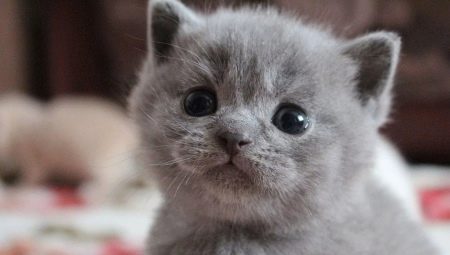A British kitten with its round-eyed face, strong body and dense plush coat is capable of touching anyone. This cheerful creature will fill every house with joy and quickly turn into a universal favorite. In order for the kitten, and then the adult cat to be healthy, playful and beautiful, he needs to ensure proper care.
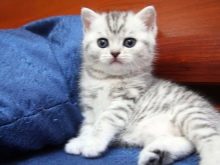

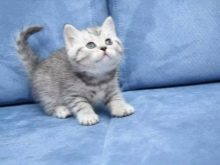
Character and habits
A description of the character of the British, most likely, will lead to the idea of having a four-tailed breed of this breed. The British, like most cats, are independent animals that can easily endure long loneliness and are able to occupy themselves at such intervals. Therefore, a British kitten is quite suitable as a friend to a busy person who does not spend too much time at home. Among the positive features of these cats are the following:
- calm disposition;
- restraint towards children;
- living with other animals;
- innate nobility;
- non-intrusiveness;
- independence;
- high intelligence;
- sociability and good nature;
- resistance to stress;
- cleanliness.
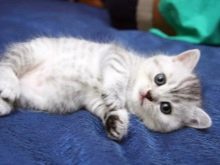
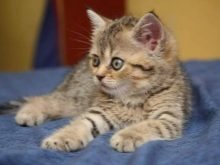
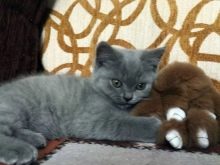
The stubbornness of the British can be attributed to some stubbornness, which is difficult to overcome during upbringing, and dislike for the demands made by a person. Like most cats, the British are vindictive. And if the owner decides, for example, to teach the fluffy how to behave correctly with the help of physical influence, it will be very difficult to return the cat's location. Taking a kitten into the house, you need to be prepared for the fact that this is a playful creature.
The British often amuse themselves by throwing things off high shelves.And they also like to take a position “somewhere higher”, even if they don’t play at that time, they “look around” from above.
The British are life inspectors. Owners often have to face the fact that their pets climb packages. You can bring groceries from the store, turn away, and after a minute you will find that they are already being examined by the “tailed examiner”, putting a curious face in your bag.
The peculiarity of these cats is that they do not choose a specific owner. The British are able to perceive the whole family as a whole, without distinguishing one.

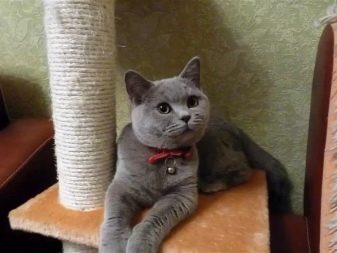
To the guests of the house, these tailed ones are friendly. It is hard to imagine that such a cat will begin to stand on its hind legs at the sight of a stranger or in another way to show him his disapproving attitude. If a cat of British breed allows a child to play with itself for a long time, then it will not tolerate “heightened attention and affection” from adults. This is not a beast that you can endlessly carry on your hands and stroke "until you turn blue." Excessive attention leads to the fact that the pet begins to hide and snort dissatisfiedly.
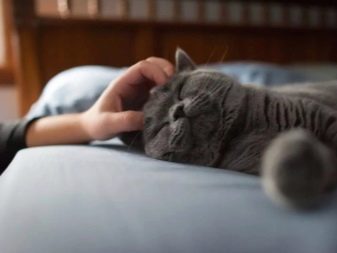
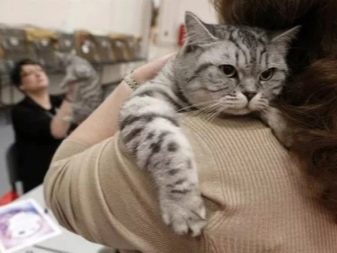
What does a kitten need?
To provide the little Briton with normal care and “living conditions”, you need to purchase such necessary accessories as:
- cat toilet with one or another filler;
- soft couch or lodge;
- bowls for food and water;
- scratching post;
- slicker;
- clothes for the street;
- carrying;
- toys.

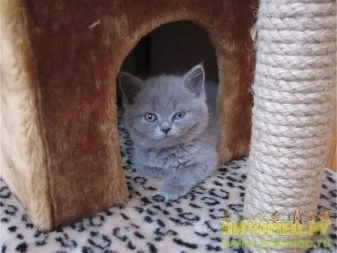
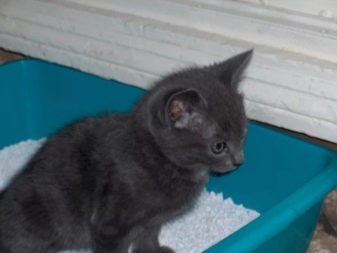
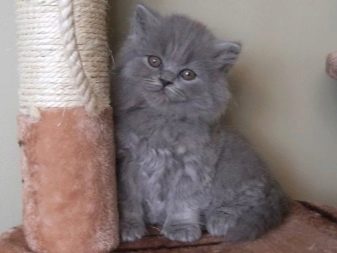
How and what to feed?
In order for the kitten to grow up fun, playful, healthy, develop correctly, it must be fully fed from the first days. The diet should be balanced. There are two options for feeding at home - use regular food or a ready-made store. Ready food has the following advantages:
- when it was created, all the necessary components necessary for saturating the kitten's body were taken into account;
- you don’t have to think about preparing cat dishes - put it in a bowl and that's it.
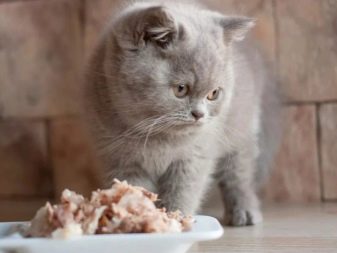
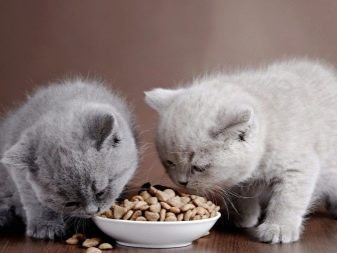
Dry and wet feeds are used for feeding. It is better to buy special products of the same brand, focusing on the age of the pet. Information about who the food is intended for is indicated on the packaging. When feeding solid store food, you need to make sure so that fresh, clean water is ready. If you decide to feed fluffy natural products, you will have to deal with cooking separately. Food from the master table is not suitable.
If the kitten was recently born, it is natural for him to feed on mother's milk. If he was taken away from the cat too early, you need to use a milk replacer, which can be found in veterinary pharmacies. From a month and a half, the baby is transferred to goat or cow milk, diluted with boiled water to reduce fat content. After 30 days of life, in addition to milk, lean meat in the form of minced meat becomes part of the diet. Murlyka is fed with cottage cheese with a small percentage of fat, milk porridge from cereals.
Once every 7 days you can give beef liver or poultry liver.
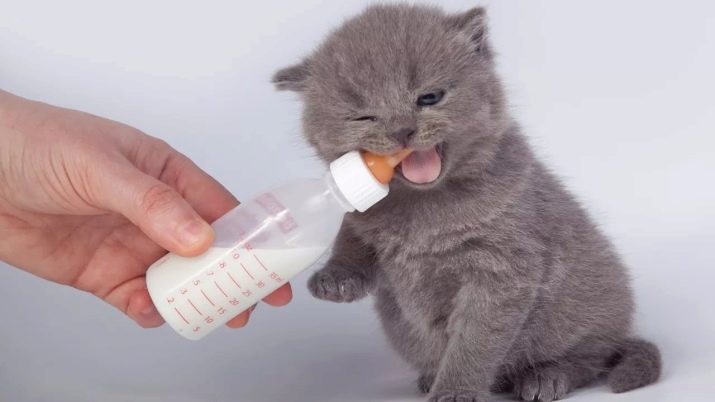
From the age of two months, the pet is offered canned food for kittens, boiled lean meat, egg yolk. After another month, a little four-person friend was introduced to fish food. All bones are removed from sea fish before being consumed. And also from 3 months, the kitten is offered boiled vegetables.
If up to this age he was fed 5-6 times a day, now four meals a day are enough. At 5 months, the kitten is ready to eat all the foods that cats usually eat. Spice and salt should not be added to cat dishes.
If the “furry child” is not full of what was offered to him, the leftovers should be immediately removed from the bowl, and the dishes themselves should be washed.
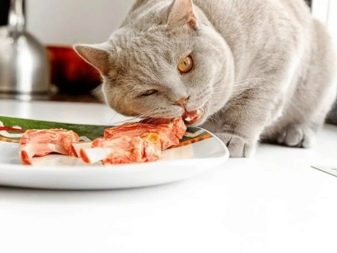

From six months of life, British cats are offered ordinary cat food with a significant content of lean meat, both boiled and raw. To give a pet raw meat and fish, they are first thawed in a freezer, and scalded with boiling water before meals, which helps to prevent infection by parasites.From six months, the British are no longer giving porridge and milk. This food is poorly digested in the body of a grown cat, which leads to abdominal pain and improper stool.
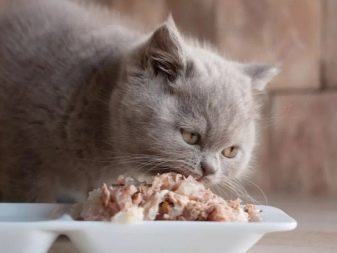
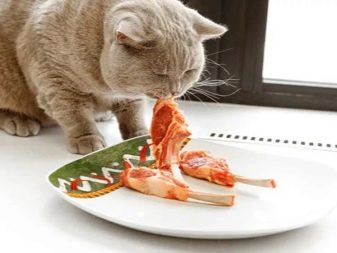
From a year, food is provided depending on the preferences of a particular pet. And if the cat is neutered, you can not give him fish and some other products. In this case, it is better to consult with a specialist about the intricacies of the diet, as well as about the menu of age cats. From the age of eight, these animals are considered elderly. Their diet is different from the "youth". The caudate inhabitant of the apartment can not be fed chicken or turkey skins, paws.
It is advisable to supplement the meat with rice, buckwheat or barley. Sour-milk products remain part of the diet. You can feed an adult pet 2-3 times a day.
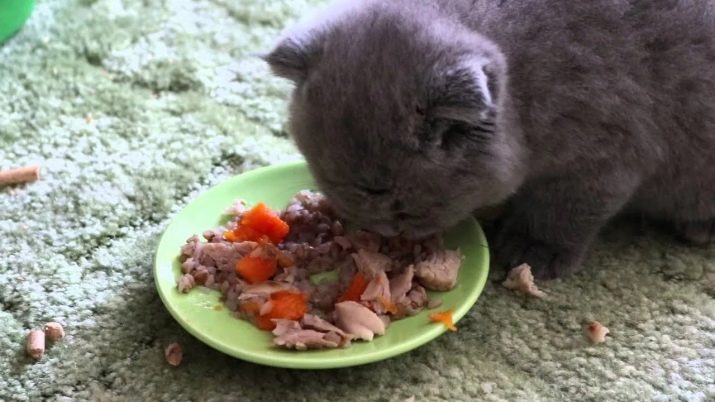
Choosing a toilet and getting used to it
To avoid trouble with the toilet, the kitten needs to be trained to do its small and big things in a designated place from a very young age. The pet will become dirty only if the point for the toilet is not suitable. To calmly relieve the need, the kitten needs a quiet place without witnesses. Before you take a new fluffy inhabitant into the apartment, you must immediately determine where to put this very tray. If the kitten chosen by the owners does not like the kitten, then it will be almost impossible to accustom it to the new one, which is located within the same house.
Learning to go to the toilet of a British kitten is not much different from teaching children a person. As a child is seated on a pot by the clock, so is tailed. After each trip to the toilet, you need to wash the tray and change the filler in it. If the kitten has chosen an inappropriate point for its toilet affairs, knowledgeable people are advised to treat it with a composition containing chlorine.
A pungent smell should ward off the pet from the "fake toilet."

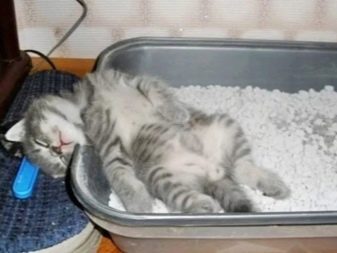
As for the tray itself, it should be comfortable for the animal. Many experts advise choosing a closed toilet. The "building" should be with a high ceiling, given that the adult cat will be quite large. As a filler, it is desirable to use a wood material, since it quickly absorbs liquid and does not allow an unpleasant odor to spread.
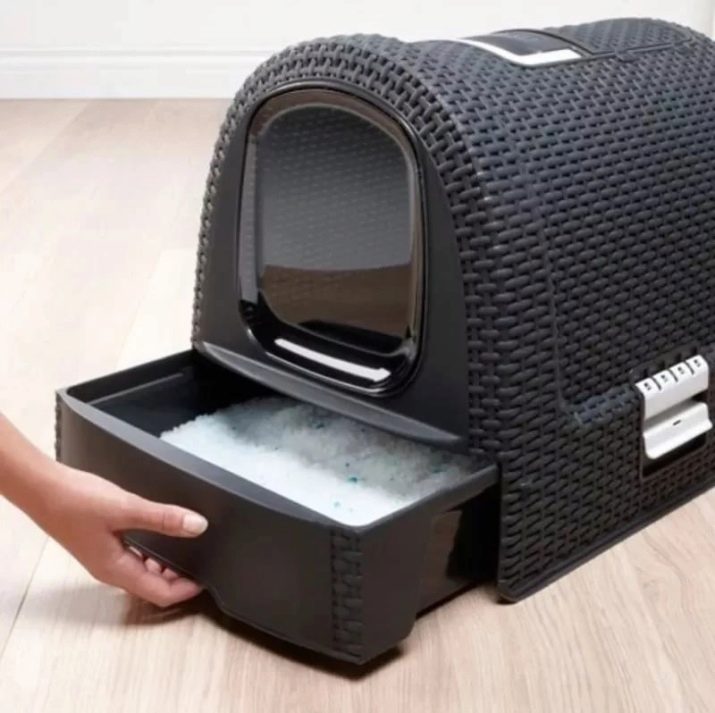
Care Features
Keeping a British kitten requires proper care. From a young age, you need to monitor so that the cat’s coat, ears and eyes are healthy. The eyes of the British periodically have to be cleaned. Discharge is especially common in kittens. Small dirt is removed with cotton buds or napkins dipped in water. There are special lotions for cat eye care. Some of them are used if lacrimation becomes too profuse. And also there are daily use tools.
Important! If you need to clean the eyes of a cat, you should first wash your hands so as not to cause an infection.
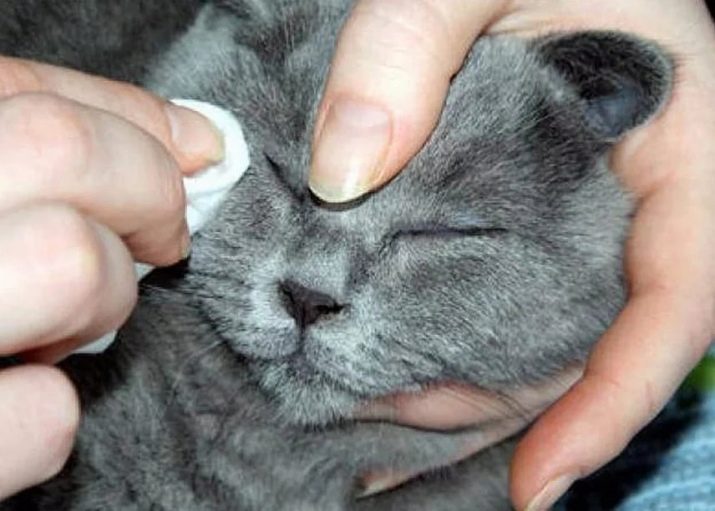
The British themselves look after wool well. But if, for example, you need to bring your pet to the exhibition, you can redeem it. For this you need to use special shampoos for this breed of cats. To bathe a cat, you need to do the following:
- fill the basin with warm water by a third;
- put a cat there;
- holding it under the throat, lather the wool (it is impossible that the water gets into the ears);
- wash off the foam with a watering can;
- There is no need to wash the “causal place” - the cat will not tolerate this;
- Having finished swimming, wrap the animal in a towel so that moisture from the wool is absorbed into it;
- after some time, comb the hair and blow dry, without bringing the device close to the skin.
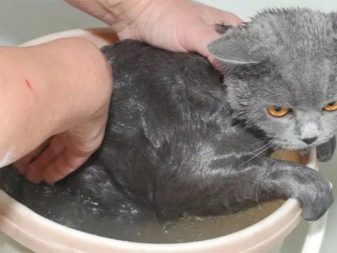
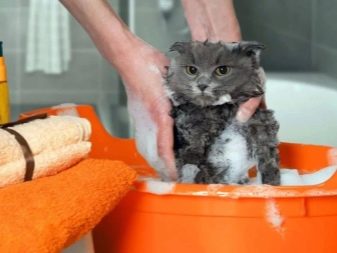
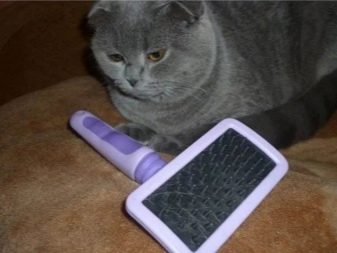
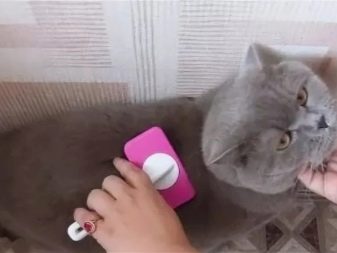
Keep in mind that in many ways, the condition of the coat depends on whether the cat has enough vitamins from the products. In order to improve the appearance of the pet, in addition to ordinary food, he can be given special additives that are offered in pet stores. It is better to take formulations that are suitable specifically for the British, taking into account the age of a particular pet.
A natural process is the molting of such animals. To avoid digestion problems, the cat will have to give a special paste to remove wool from the stomach. In addition, the undercoat needs to be combed out several times a week. The cat is combed in the direction of hair growth, with the exception of the neck and muzzle.
They need to be combed out against the coat. The British, unlike many other cats, favorably perceive such a massage.
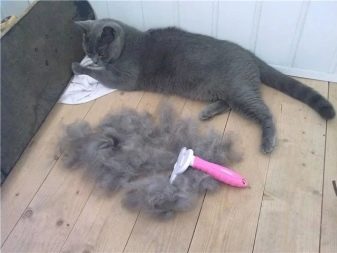
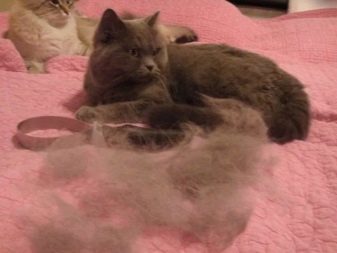
Twice a month, the Briton should to cut claws on forepaws. On the back, this procedure is done monthly. The claw point also allows you to keep the claws in order. As far as ear care is concerned, there is no need to be diligent in cleaning it. "Planned" can be done 1 time per month or if it is clear that the ears are dirty. For purification using hydrogen peroxide. A little liquid is applied to a piece of cotton or a disk and wiped the ear shell. Peroxide should not get into the depth of the ear canal.
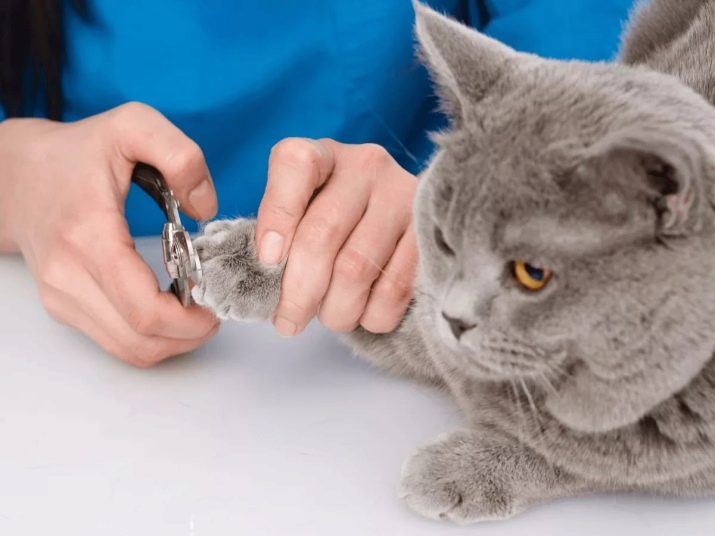
Part of the departure, many British owners consider a haircut, although the other half of the lovers of such animals call it superfluous. The former motivates the need to cut cats so that the house has too much hair, and the pets themselves suffer from heat, given their thick undercoat. The latter are not ready to spoil what nature generously endowed with the pets.
Grooming supporters should know that such a thing should be trusted to a specialist who knows the cat's anatomy in detail. If you cut yourself, you can injure the animal and introduce a dangerous infection into its body. When cutting, the use of force is excluded so that the cat does not receive psychological trauma. The comfort of the state of the animal is largely determined by whether he likes the master.
If this is a person who sincerely loves cats and knows how to handle them, the Briton will react to his actions without fear or aggression.

Part of caring for a kitten or adult cat is the systematic vaccination. Vaccination is carried out according to the calendar. The kitten is administered the first vaccine against panleukopenia, viral rhinotracheitis and calicivirosis as early as 9-12 weeks, repeating it after 2 weeks. At 3 months, it is advisable to vaccinate the kitten against rabies. And also the British are vaccinated against the following diseases:
- chlamydia
- microsporia;
- trichophytosis (lichen);
- infectious peritonitis;
- leukemia;
- dermatosis.
Important! Vaccines are made healthy animals in a veterinary clinic. Such procedures should not be carried out during the change of primary teeth to permanent teeth, when immunity is reduced in cats.
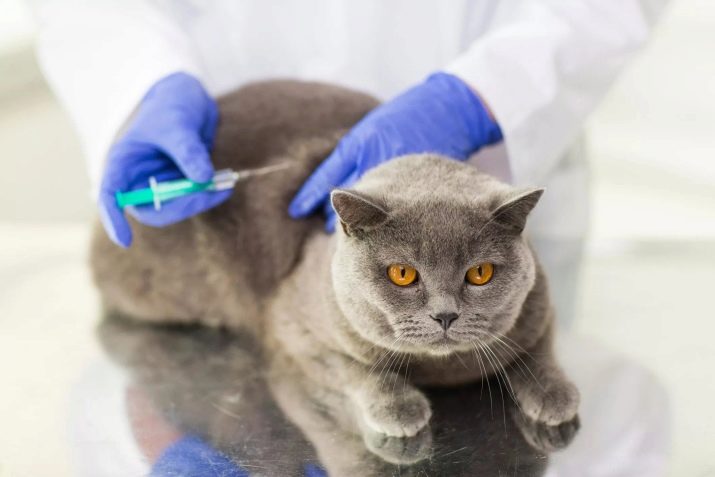
Games and education
Most often, British babies are taken from the nursery in 3 months. But if the kitten got into the house at the age of 1 month, you need to keep in mind that the fright of the baby can not be avoided. This is quite natural. It is necessary to calculate in advance the probable places where the new tenant will whisk in order to hide from prying eyes. They are blocked in advance so that in extreme cases they do not have to move furniture, arrange searches, and so on.
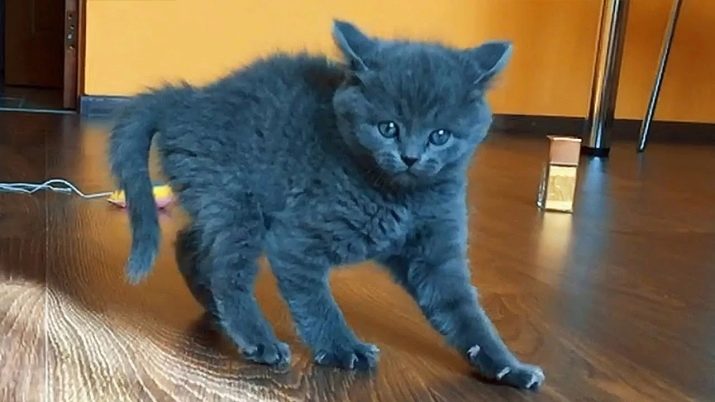
If the kitten nevertheless hides, it is better to give him the opportunity to sit quietly in the "trench" by moving the bowls with food and water closer. Until the four-legged child leaves the shelter, it is advisable for someone from the family to be at home. It is not necessary to prematurely determine the place for the kitten to lie. The litter should be put in the place that the pet chooses. If he liked a certain point in the apartment, he is unlikely to change the place of rest.
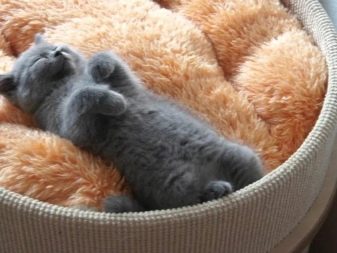
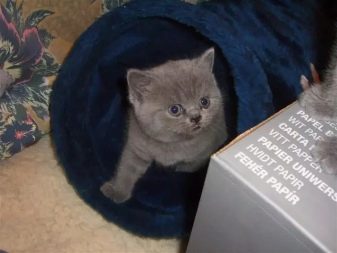
If there are children in the house, you will have to warn them in advance so that they do not squeeze the kitten, do not try to pull its tail, and so on. The voice on the new tenant cannot be raised either. Affectionate intonation baby distinguishes as well as demanding. It is necessary to give time for the fluff to adapt in the new environment. When the first psychological barrier is overcome, the kitten will begin to explore the house. His safety at this time is above all.
It must be borne in mind that habits acquired in childhood will accompany the cat throughout life. You need to give a good education up to 2 years.The kitten should immediately be made aware that he is not the master in the house, but a man. And what exactly a person sets the limits of what is permitted. If a cat behaves roughly, say, using a scratching post for scratching, he should be encouraged to eat something delicious. If the pet acts against the rules, it is required to make an suggestion with strict intonations.

If during cat grooming procedures he breaks out and scratches, you can take him by the scruff of his neck, look into his eyes and hiss menacingly. If he did not stop breaking out, he should not be let go. If you step back, the next time the cat will again begin to show character.
It is better to immediately put it in place than to tolerate scratches and marks from the teeth.
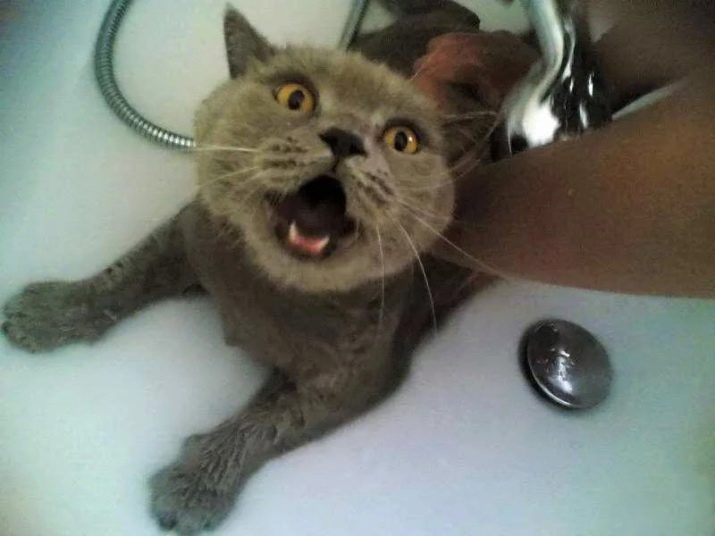
British kittens are playful. They like the following things:
- clockwork mice;
- small balls;
- dishwashing sponges;
- empty bags that rustle loudly.
A kitten or an adult cat will recklessly chase after a light spot of a laser pointer sliding on walls and floor. Such entertainment will bring a lot of joyful minutes to the four-legged tenant and its owners. For people who have even little experience in dealing with cats, caring for the British is not difficult.
If you find a common language with the "plush baby" from the first days, you can buy a pet for many years, which will only bring joy.
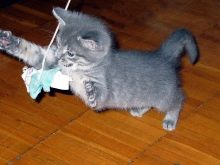
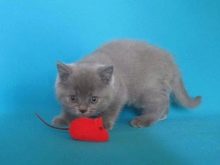
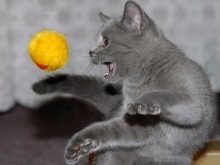
On how to care for a British kitten, see below.
